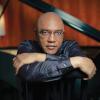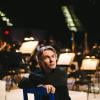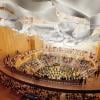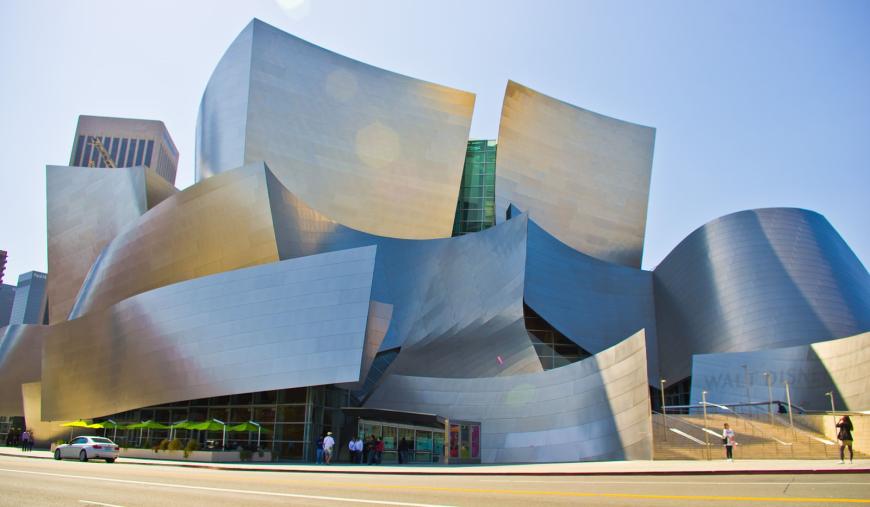
The year was 1987, the check was for $50 million, its signator Lillian Disney. And with that began an epic tale — the building of Walt Disney Concert Hall — that would put Los Angeles on the cultural map, much to the envy of other arts meccas, including New York City, whose Carnegie Hall has been the apotheosis of pristine sound since 1891.
Little did anyone know, however, that it would be another 16 years before the magnificent Frank Gehry-designed structure (we’re talking more than 22 million pounds, or 10,000 metric tons, of steel) opened its doors. Resembling a majestic seagoing vessel, its sails billowing in the wind, the 300,000-square-foot venue — a cluster of eccentric shapes with undulating walls — continues to be a draw for music lovers and tourists alike.
Indeed, with its Douglas fir-lined interior, vineyard-style seating, capacity of 2,265, and crystalline acoustics designed by Yasuhisa Toyota, Disney Hall, home to both the Los Angeles Philharmonic and the Los Angeles Master Chorale, truly embodies Gehry’s vision of creating “a living room for the city.” It came with a price tag of $274 million, a veritable bargain in today’s market.
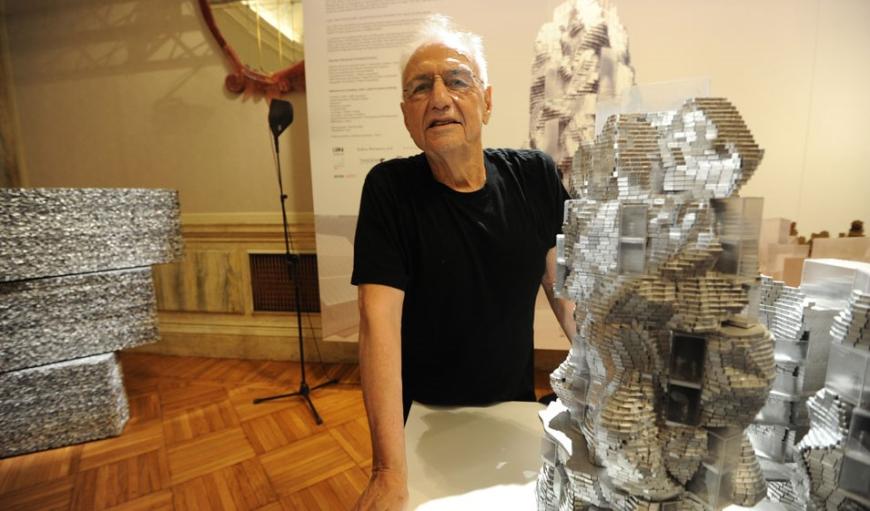
Also instrumental in helping get the hall built was Ernest Fleischmann, who served as executive director of the LA Phil from 1969–1998. When asked how music informed his design of the venue and how, in turn, architecture influences the musical performances, Gehry, in an email, replied that he had the “great fortune to have known Ernest Fleischmann, [who] was my mentor in classical music. He introduced me to all of the conductors and musicians.”
Gehry, who turns 95 in February, also pointed out that Fleischmann took him to “the best concert halls in the world,” adding that he “helped me understand the relationship between audience and performer. In many ways, he was preparing me for Disney Concert Hall. I learned a lot about how musicians feel about a room, and how important it is to make sure that they can feel the audience.”
And the relationship between audience and musicians has proved nothing less than a mutual lovefest, especially on the night of Oct. 23, 2003, when then-Music Director Esa-Pekka Salonen led the LA Phil and the Master Chorale in the first of three gala concerts, with Igor Stravinsky’s The Rite of Spring a highlight of those programs.
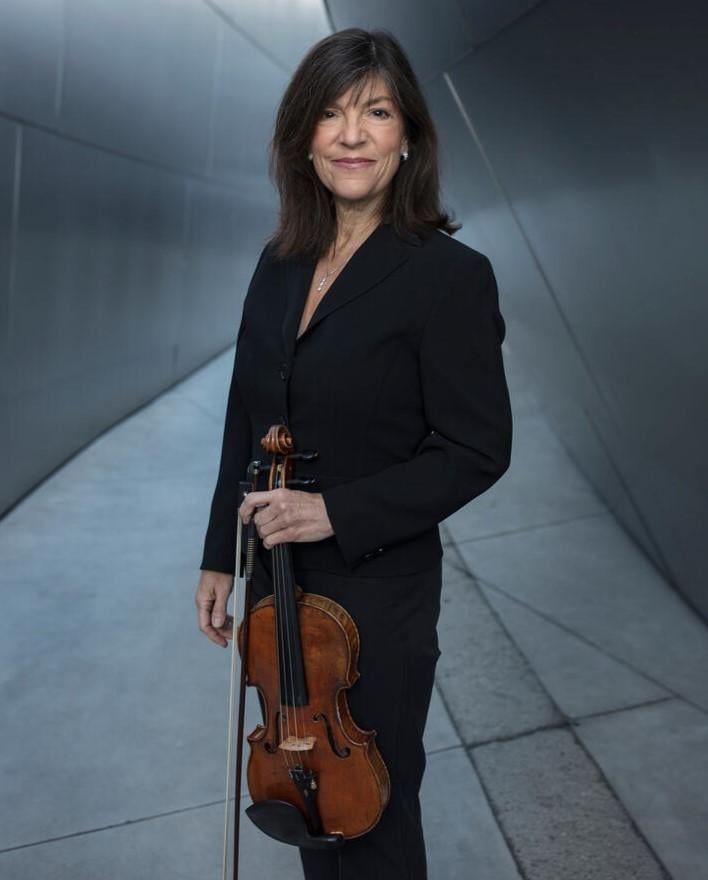
LA Phil first violinist Camille Avellano, who joined the orchestra in 1981, was there when the hall opened and has played under four music directors: Carlo Maria Giulini, André Previn, Salonen, and Gustavo Dudamel (whose tenure began in 2009 and continues until the end of the 2025–2026 season, when he will become music and artistic director of the New York Philharmonic). The move from the Dorothy Chandler Pavilion, which had been home to the LA Phil since 1964, was highly anticipated and, needless to say, did not disappoint.
Avellano’s memories of the opening-night concerts are still fresh. “It was exhilarating, of course,” said the musician, who grew up in Chicago, where her father was principal bass of the Chicago Symphony for 49 years. “And after playing The Rite of Spring in the Chandler, having that immediate acoustic in Disney, [where] it’s a much more intimate space — you’re not so far away from everybody — it was exhilarating to have the audience all around us. It felt like a great big chamber music concert.”
Gehry also acknowledged that he had been transformed by music and the performing arts in a “powerful way,” adding that “one of the most important aspects is creating an intimacy between musicians and the audience. If the audience feels a connection to the performers, they will respond more positively.
“The performer will feel the love of the audience,” the architect continued, “and will perform better, creating a virtuous cycle that can lead to some phenomenal performances. The room can make or break that human connection, so it is vital to create a space where everyone feels comfortable and welcome.”
Disney Hall at 20, acknowledged Avellano, continues to be “a beautiful place to play in. Visually it’s stunning; I love the interior especially. It feels like I’m inside a big cello. That’s what it feels like, [and] it’s still a lot of fun. I have to say, being close to the audience is really, really nice. You feel like you’re getting immediate feedback, and that’s lovely.”
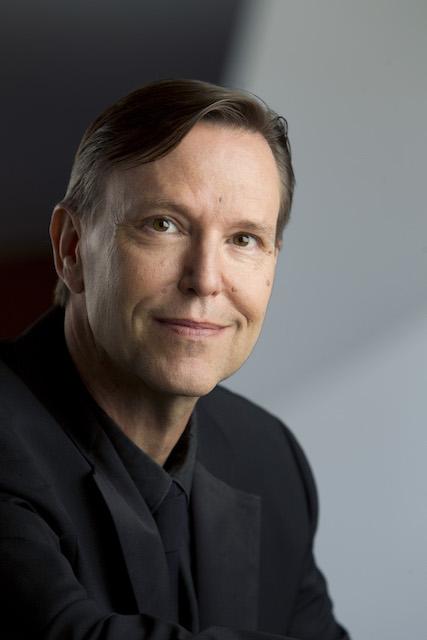
For California-born Grant Gershon, who had been living in New York for several years in the late 1990s, moving back to L.A. in 2001 to become music director of the Master Chorale was a no-brainer. And while the chorus was still performing in the Chandler at that time, the notion that Disney Hall was going to open a mere two years later was icing on that musical cake.
Gershon, who has led more than 200 Master Chorale performances in Disney Hall, explained: “Being in the concert hall for the first performance was absolutely overwhelming. It was like I was hearing the Master Chorale for the first time. Esa-Pekka and the players in the Phil say much the same thing about their first experience. [But] I feel like for the Chorale, it was even more so than for the orchestra.”
Gershon, whose discography includes a 2022 Grammy Award for Best Choral Performance with Dudamel and the LA Phil for their Deutsche Grammophon recording of Gustav Mahler’s Symphony No. 8, said that the opening-night performance in 2003 was “a revelation. Because we spent our whole existence at the back of the stage in the Dorothy Chandler, we were like a football field away from the closest audience member.
“To suddenly be in this hall,” Gershon gushed, “where we’re surrounded by the audience and they’re close enough to touch and we’re all in the same room — we’re actually hearing the sound of the voice, every breath that the singers are taking.”
And while nobody can deny that Carnegie Hall is a magnificent concert venue, Gershon, who’s intimately familiar with the New York spot, is, not surprisingly, partial to his hometown hall. “They’re really different,” he acknowledged, “but the biggest difference is having the audience surround you in Disney.
“It’s a feeling like the sound is traveling in every direction, and it’s filling every inch of the space of the concert hall and resonating. It’s activating the building. Carnegie Hall is a proscenium stage and is basically only in front of you, but the sense in Disney Hall that you’re activating the space is really palpable and very, very different from almost any other hall that I’ve been in.
“The energy that’s created by the configuration,” Gershon further explained, “and the fact that you’re having this sense of communion with audience members all around you — there’s no separation between the listener and the artists onstage.”
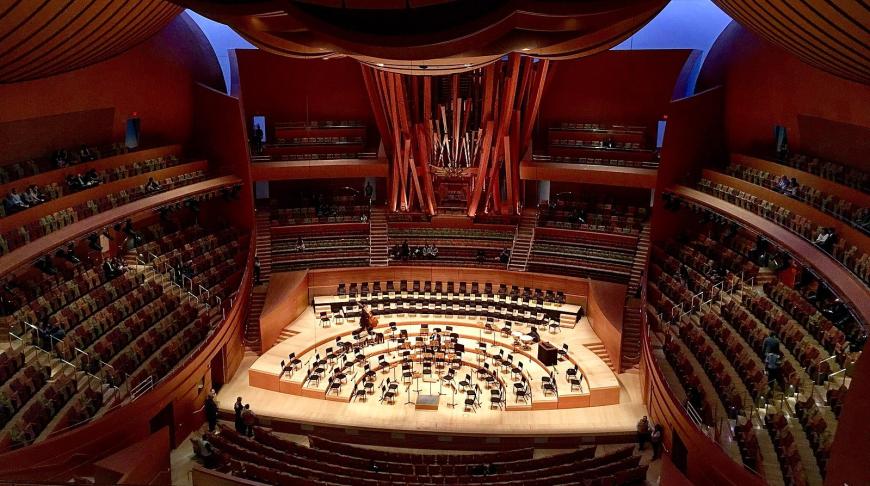
LA Phil associate concertmaster Bing Wang agrees. Having joined the orchestra in 1994, the violinist was also performing on opening night two decades ago. She recalled that it was “like a dream — in the best way. We had three days of celebrations with different programs. The Rite of Spring exemplified the sound acoustic of the hall and the orchestra.
“It felt like an earth-shattering piece at that time,” Wang noted, “and I’m still excited playing there. I’ve been there both as an audience [member] and musician onstage. It’s different obviously, [but] I have to say, and maybe it sounds cliche, but I’m still in awe when I step out into the audience and hear a concerto or smaller ensemble piece. It still feels like a dream — that this is where we are and this is where we play every day. We have Frank Gehry to thank for designing a hall like this and that we don’t get tired of it. It feels like it’s alive.”
Then there’s the notion that performing in Disney Hall has decidedly helped change the DNA of the Master Chorale. The organization has transformed from a largely volunteer choir to one that boasts 100 professional singers and has staged more than 34 world premieres and underwritten some 38 commissions of original music, including Billy Childs’s upcoming In the Arms of the Beloved.
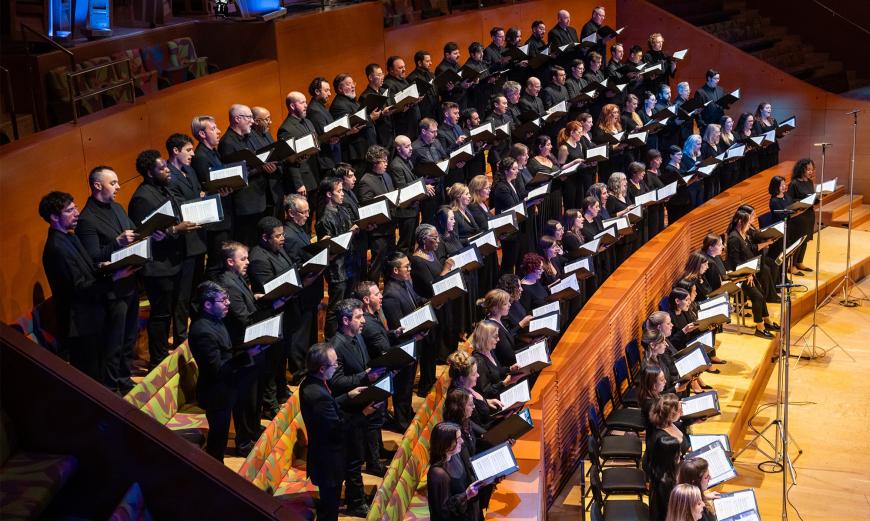
“Honestly,” Gershon said, “I am not sure that the Master Chorale would exist — at least not in the form that we know it now — without Disney Hall. It opened up so many possibilities for us. First and foremost, it activated the audience in a way we had never experienced previously. We were able to grow our subscription audience, our single-ticket audience, and create a sense of buzz and event around every concert.
“Because of that energy,” Gershon enthused, “because of the increase in audience size and scope, that allowed us to fully professionalize, to experiment much more freely with repertory and also with the way we would present the repertory so that we could create much more immersive experiences — whether in staged productions, collaborations with other entities and art forms, with installations of light and video. There are all sorts of possibilities to take advantage of the energy of the concert hall. It transformed both the music and the way that we perform it as well.”
And while Gershon fondly recalls a myriad of memorable concerts, he cited last year’s performance of Music to Accompany a Departure, directed by Peter Sellars, as a standout. (The Master Chorale also toured the production in Europe earlier this year and recently performed it in Berkeley.)
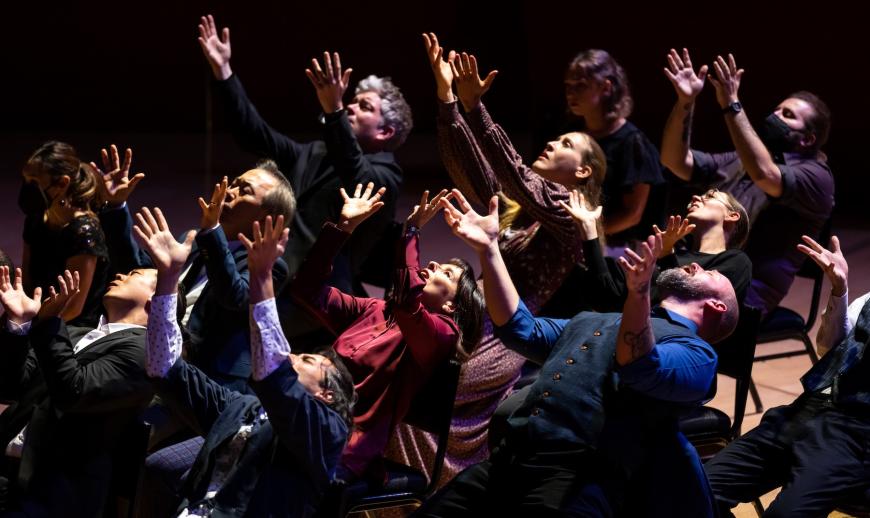
Gershon noted that the design of the hall made for intriguing ways to explore the space in Music to Accompany a Departure. “At the end of the [piece], the composer [Heinrich Schütz] calls for different trios of singers to be in different parts of the space and specifically says, ‘Two of the singers are angels, and the other is the soul of the blessed departed.’
“In Disney, we were able to utilize all of those upper spaces — because it’s so tall — for the audience and for us onstage to feel that there were these voices of spirits coming from above, and you couldn’t place where the sound was coming from. It seemed like the universe itself was responding to what we were singing onstage. Those kinds of activations of the hall are so memorable and unique to that space.”
Avellano, who retires at the end of this season, has vivid memories of performing Salonen’s 2004 composition Wing on Wing in its premiere. “That was like, ‘Wow!’” she exclaimed. She also concurred with Gershon that the hall’s unique design lends itself to multifunctionality.
“I think they’ve done some very creative things with the space, given that it is a concert hall. The way things were constructed enabled them to do productions that normal concert halls couldn’t. It was built with that in mind. [For example,] the risers are hydraulic, and you can make the stage area bigger or smaller.”
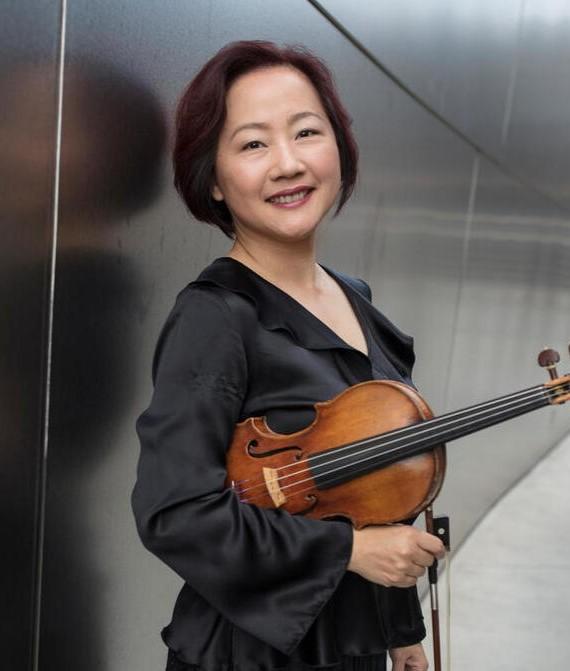
Wang, in looking back on some of the numerous noteworthy concerts she’s played, recalled that performing Mahler’s Symphony No. 1 under Dudamel was “a defining moment for me. It was important in [Dudamel’s] career; he won the Mahler Competition [in 2004] and played it for his first concert in Disney Hall.”
Wang said that she also relished celebrating the LA Phil centennial in 2019 and working with three of the orchestra’s acclaimed music directors: Zubin Mehta (1962–1978); Salonen (1992–2009), who is now conductor laureate; and Dudamel, who with the LA Phil was recently nominated for his sixth Grammy for Adès: Dante. “This will stay with me. These three music directors are so dear and [comprise] three generations.”
Gehry, who can often be spotted in the audience at the Phil’s Sunday matinees, acknowledged that “all of the concerts have been incredible,” adding that “Esa-Pekka’s [2023 world premiere] Tiu was extraordinary. It filled the hall so beautifully. I was in tears.”
And while many concertgoers might be in tears at the thought of the 42-year-old Dudamel bidding farewell to the orchestra in less than three years, there is still plenty of music to be made in the hall that Gehry built, its welcoming living room a symbol of all that is good about Los Angeles. Not for nothing did German philosopher Friedrich Nietzsche once say, “Without music, life would be a mistake.”


